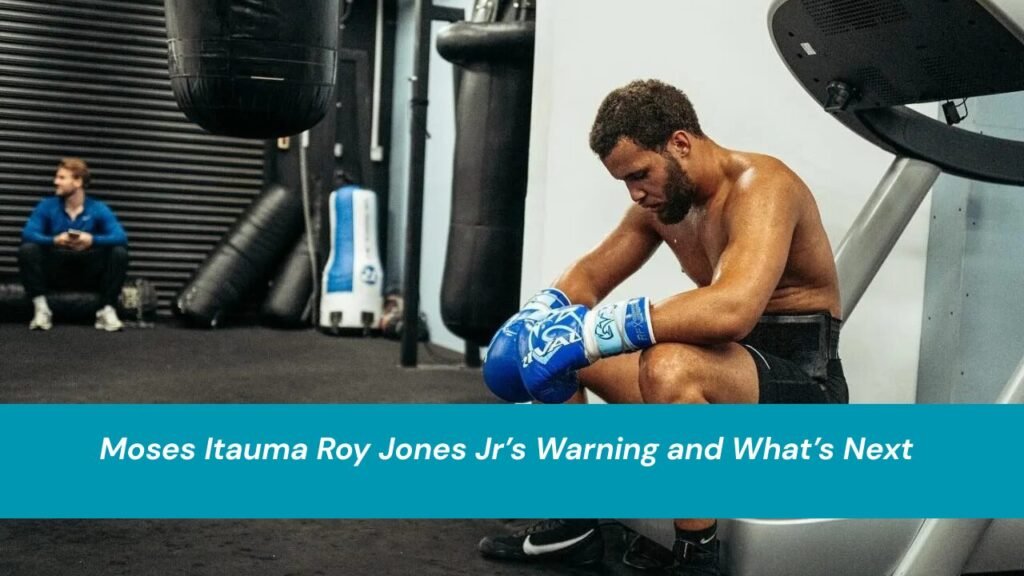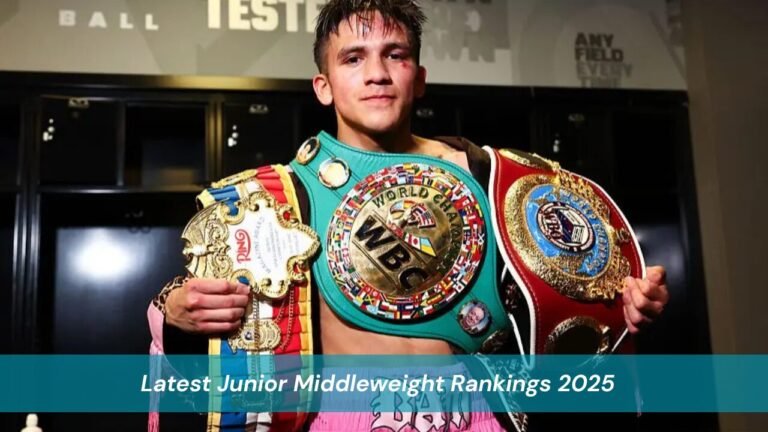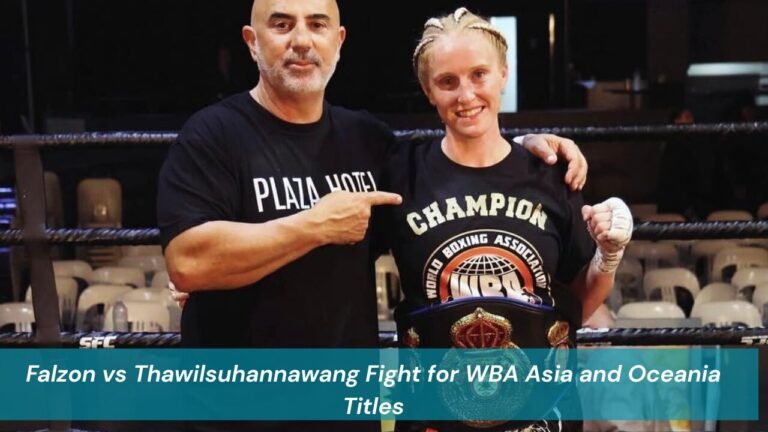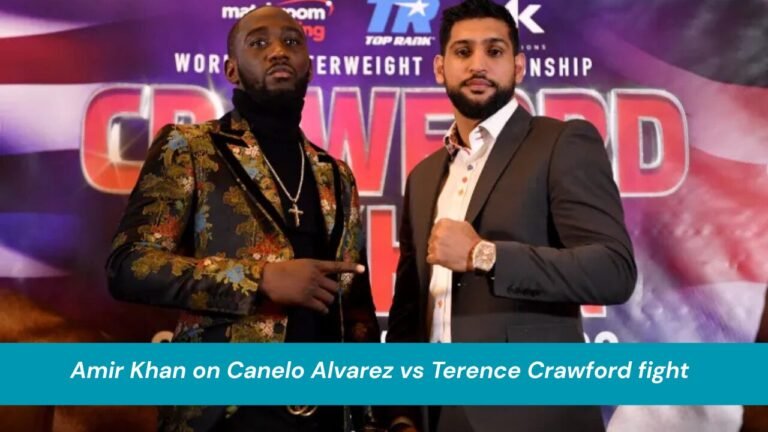The heavyweight division is buzzing with promise and peril, and few names embody that tension like Moses Itauma. As The Ring’s 2024 Prospect of the Year readies himself for his first significant step-up bout against Dillian Whyte on August 16 in Riyadh, Hall of Famer Roy Jones Jr. has a clear message: proceed with caution. In Jones’ words, you can throw a blue-chip prospect “into the fire,” but launching him into the “inferno” could burn a career before it fully ignites. For Jones, the current inferno wears the name Oleksandr Usyk.
In this in-depth analysis, we explore why Jones is urging patience with Itauma, what the Whyte fight will actually reveal, and how lessons from other rising fighters—including the Jake Paul experiment — apply to a phenom who many believe is destined for the summit. Along the way, we’ll unpack the hype, the risk, and the practical path forward for a 20-year-old with a frighteningly fast knockout clip and even faster-growing expectations.
The Case for Caution Roy Jones Jr.’s Big-Picture View
Roy Jones Jr. understands both meteoric ascents and hard lessons better than almost anyone. His message on Itauma is as much about pacing as it is about talent. In an interview with The Ring, Jones praised the prospect’s potential but warned against rushing him into the division’s most dangerous waters. Usyk, he noted, is the “inferno” right now—an all-world operator whose timing, angles, and adaptability can make even seasoned pros look lost.
Jones’ overarching point is simple and time-tested: development matters. Champions aren’t made by skipping levels; they’re forged by navigating them intelligently. It’s not that Moses Itauma isn’t the truth—Jones believes he is—it’s that matchups must nudge learning forward without collapsing confidence or technical growth under unreasonable pressure.
For a vivid cautionary precedent, Jones pointed to Jared Anderson. Fast-tracked against a rugged elite-level foe, Anderson was stopped inside five rounds by Martin Bakole, a heavyweight many would classify as a top-tier “lie detector.” That result didn’t end Anderson’s story, but it reset expectations overnight. In a division where one right hand can rewrite a career, overreaching too soon can be costly.
For more on Jones’ perspective, see Roy Jones Jr.’s warning about rushing a prodigy (The Ring).
Who Is Moses Itauma Right Now?
- Age: 20
- Record: 12-0 (10 KOs)
- Recent form: Eight consecutive knockouts, each inside two rounds
- Recognition: The Ring’s 2024 Prospect of the Year
- Supporters: High-profile endorsements from Lennox Lewis and others
- Matchmaking: Next bout vs. Dillian Whyte, headlining a DAZN PPV in Riyadh
The way Itauma has been dispatching opponents has captured both fan intrigue and industry attention. British boxing icon Lennox Lewis labeling him the “next coming” is not an everyday accolade. Manager Francis Warren has gone further, sketching a potential cultural impact on British boxing comparable to what LeBron James, Tiger Woods, and David Beckham achieved in their respective sports. Turki Alalshikh, an increasingly influential power broker in the sport, has floated an even bolder idea: a challenge against Oleksandr Usyk for the undisputed heavyweight titles sooner rather than later.
Those are enormous claims for a 20-year-old, and Jones’ caution sits right at the intersection of promise and prudence.
Why Dillian Whyte Is the Right Test at the Right Time
On paper, Whyte is the kind of measuring stick that reveals more than a highlight-reel stoppage over a late replacement ever could.
Dillian Whyte boasts a professional résumé of 31 wins and 3 losses (21 by knockout), with his only defeats coming at the hands of former champions Tyson Fury, Anthony Joshua, and Alexander Povetkin. Over the course of his career, he has gained extensive experience in top-level bouts, facing opponents with a variety of styles and developing the veteran savvy that comes with years in the ring. While Whyte poses a genuine threat—dangerous enough to capitalize on any mistakes he remains a beatable opponent for a rising fighter equipped with the right skills and strategy.
Jones said it plainly: “The fight against Whyte will tell us a lot about Itauma.” Whyte’s a durable, physically strong gatekeeper with power and ring knowledge. If Itauma’s power and poise translate against this caliber of opposition, it’s a real signpost. If they don’t, that’s a different kind of information equally valuable, if less glamorous about what needs refining before the next rung on the ladder.
Moses Itauma’s Hype vs. the “Inferno” of Oleksandr Usyk
What does Jones mean by “inferno”? He’s not just talking about belts; he’s talking about the skill bandwidth. Usyk’s footwork, feints, and shot selection create a problem set that very few heavyweights let alone 20-year-olds are prepared to solve. Pushing a young contender straight into that problem set risks:
He may be struggling with technical overload, facing sequences and adjustments he hasn’t yet encountered in the ring. Such challenges can lead to confidence erosion, especially after a lopsided loss that chips away at self-belief. On top of that, his career risks falling into matchmaking stagnation, where rebuilding happens through low-risk fights rather than through steady, substantive development.
If the goal is an eventual long reign, it’s better to stack progressively harder tests fighters who ask new questions without presenting all the hardest ones at once. That’s how you turn raw talent into elite competency.
Lessons from Jared Anderson The Wrong Riddle at the Wrong Time
Jared Anderson’s stumble against Martin Bakole is a textbook illustration of why pacing matters. Anderson had looked every bit the part of a future contender: fast, athletic, heavy-handed. But Bakole offered power, durability, and good pressure form, plus the composure that comes with hard-earned experience. The result wasn’t just a loss; it was a crash course in what happens when the gap between promise and preparation is underestimated.
The lesson isn’t to protect fighters from adversity. It’s to stage adversity in a way that builds them. Moses Itauma can absolutely be “thrown into the fire,” to use Jones’ phrase. But what is the nature of that fire? Whyte’s veteran tricks, craft, and composure present a meaningful test—just not the totality of Usyk’s challenges all at once.
The Whyte Fight: What To Watch For on Fight Night
As Itauma headlines in Riyadh on DAZN PPV, here are the key indicators that will reveal where he is in his development arc:
Moses Itauma has been dispatching opponents in quick fashion, but if Dillian Whyte manages to take him beyond the opening rounds, it will be telling to see how Itauma controls his pace, chooses his shots, and maintains his defense during the middle stages of the fight. Under pressure whether from Whyte’s clean punches or his clinch tactics his body language will reveal a lot: will he stay composed and reset, or will he get lured into risky exchanges that suit the veteran? Another key factor will be his defensive responsibility after attacking; knockout specialists often linger to admire their work, but against a dangerous puncher like Whyte, quick resets and exits are crucial. Variety in his offense will also be tested. Can he mix in body shots, set traps, and change tempo, or will he stick to single, power-shot hunting? Finally, if his initial strategy fails, his ability and that of his corner to adapt and implement an effective Plan B in real time could determine the outcome.
If he clears these checkpoints with poise, a top-10 ranking sooner rather than later makes sense. As Jones suggested, a top-five status may even be on the horizon—provided the steps between Whyte and the top are navigated shrewdly.
How Fast Is Too Fast? The Matchmaking Blueprint
Smart development could look like this:
After the Whyte fight, if Itauma secures a clean win but still goes the distance, it would be wise to match him with another seasoned campaigner someone capable of boxing and clinching to enforce discipline. To further his growth, opponents should be rotated to expose him to different styles, such as pressure fighters, switch-hitters, and long jab specialists, steadily building his “experience bank.” His team should focus on a rankings climb that avoids prematurely facing the sport’s apex predators, while still gradually increasing the quality of opposition. When the moment is right, the first title challenge should be carefully timed against a champion whose style plays to Itauma’s strengths, maximizing his chances of victory
What Roy Jones Jr.’s Jake Paul Take Teaches About Risk Management
Jones’ skepticism isn’t limited to heavyweights. On Jake Paul’s cruiserweight ambitions, Jones’ stance is blunt: if Paul is matched with experienced, tough opponents, “those guys will beat him.” The point isn’t to belittle Paul’s efforts; it’s to reaffirm that curated matchups can distort readiness. Paul’s WBA ranking at No. 14 after a decision over Julio Cesar Chavez Jr., and a playful face-off with champion Gilberto “Zurdo” Ramirez, may create headlines but to Jones, it doesn’t change the underlying calculus of real-world readiness against proven champions.
For context on that stance, see experienced, tough opponents will beat him (The Ring).
This insight feeds back into Itauma’s situation: Jones isn’t against bold moves he’s against blind ones. The difference between a top-tier prospect and a savvy champion is often the quality of problems solved on the way up.
Moses Itauma’s Ceiling and the British Boxing Context
Assuming Itauma keeps winning, Britain could have a new center of gravity in its post-Fury, post-Joshua heavyweight era. Francis Warren’s comparisons to transcendent athletes mark just how bullish insiders are about Itauma’s ceiling. If Lennox Lewis’ “next coming” label is even half-right, the combination of marketability and menace will be formidable. With Turki Alalshikh making megafights in Riyadh a new normal, the commercial runway for a charismatic, knockout-capable British heavyweight is perhaps the best it has ever been.
That’s the opportunity. The risk is that rushing into the inferno could short-circuit a potential era before it starts.
The Stakes in Riyadh
Beating Dillian Whyte won’t prove that Itauma can outthink and outmaneuver Usyk. It’s not meant to. It will, however, demonstrate how his early gifts translate under veteran stress. It will show whether his team’s game-planning and corner communication can steer him through new kinds of turbulence. And it will either validate the calls for a top-five status soon— signal that a few more rungs are necessary before the final ascent.
Either outcome is useful—if the long game remains the priority.
Where Roy Jones Jr. Is Probably Right and Where He Might Be Surprised
Roy Jones Jr. makes a strong case for caution when it comes to Moses Itauma’s rise. Usyk is a stylistic minefield, and no fighter should be rushed into facing him. The recent Anderson-Bakole episode is a vivid reminder that timing can make or break a career. Experience, too, is a priceless asset it helps fighters stay calm under pressure, and it’s something that can’t be fully developed in the gym alone.
That said, there are scenarios where Jones might be surprised. Some prospects are able to absorb tough lessons with remarkable speed. If Itauma can handle a seasoned opponent like Dillian Whyte with tactical maturity not relying solely on power his climb through the heavyweight ranks could safely accelerate. And if the heavyweight titles change hands, as they often do, the right champion at the right moment could offer a far more manageable challenge earlier than expected. Regardless of how events unfold, Jones’ core advice holds true: a fighter’s development curve should always stay ahead of their marketing curve.
The Road Beyond Whyte Building Toward the Summit
If Itauma wins, a sensible next step is another veteran who demands solutions over swagger, someone rugged enough to test structure without presenting elite speed or southpaw traps that mimic Usyk. One or two of those and a top-10 eliminator could make talk of titles more than hype, especially if his team can secure stylistically appropriate tests that diversify the prospect’s education.
In a division defined by volatility, patience is not passivity. It’s a strategy.
FAQs
What makes Moses Itauma different from other heavyweight prospects?
Beyond his age and knockout streak, Itauma has shown a knack for quick reads and finishing instincts. The intrigue is whether those instincts hold against opponents who won’t fold within a round or two. The Whyte fight should test his patience, shot selection, and problem-solving under resistance.
Why is Roy Jones Jr. so cautious about rushing Itauma?
Jones values development through staged challenges. He points to Jared Anderson’s loss to Martin Bakole as an example of what happens when the level jump exceeds a prospect’s current preparation. To Jones, Usyk represents a level of complexity that should be approached after intermediate steps—not as a first test on the world stage.
If Itauma beats Whyte, is he ready for a title shot?
Not necessarily. A clean win would justify a top-10 conversation and perhaps a targeted eliminator, but a direct leap to an operator like Usyk is a separate question. The smarter route is to take one or two more stylistically different veteran tests before a title bid.
How does Jake Paul’s situation relate to Itauma’s path?
Jones’ skepticism about Paul rooted in curated matchmaking and a lack of wins over seasoned elites highlights the difference between hype and readiness. For Itauma, the lesson is to earn each step with substantive wins that travel beyond highlight reels.
What should fans look for against Dillian Whyte?
Look for how Itauma behaves after exchanges, how he manages pace if the fight goes long, whether he invests in body work, and how he adjusts if Plan A stalls. These are the ingredients of a fighter being built for longevity, not just headlines.
Conclusion
Roy Jones Jr.’s message about Moses Itauma is not contrarian it’s constructive. Itauma’s power, poise, and potential are real. So are the risks of rushing him into an “inferno” like Oleksandr Usyk before he’s logged the right kind of rounds against the right kind of opponents. Dillian Whyte represents a wise step: a dangerous, knowledgeable veteran who will ask questions that early knockouts cannot.
If Itauma aces this test with maturity managing distance, tempo, and adjustments then accelerated talks about top-five status will be justified. But whether the rise is rapid or measured, the goal should be the same: build the champion before you chase the crown.




